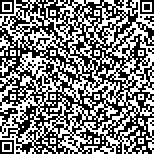侯梅,赵荣安,于荣,赵建慧,李玉堂.早产和足月儿脑性瘫痪临床与影像学特点探讨[J].中华物理医学与康复杂志,2004,(1):
扫码阅读全文

|
| 早产和足月儿脑性瘫痪临床与影像学特点探讨 |
|
| |
| DOI: |
| 中文关键词: 脑瘫 儿童 神经影像 出生胎龄 |
| 英文关键词: Cerebral palsy Infants Neuroimaging Gestational age |
| 基金项目: |
|
| 摘要点击次数: 2568 |
| 全文下载次数: 3580 |
| 中文摘要: |
| 目的探讨早产和足月儿脑性瘫痪(cerebral palsy, CP)的临床、脑CT或MRI的表现及其与出生胎龄和脑瘫类型的关系。 方法以医院为基础回顾性分析294例脑瘫患儿的病史、临床、CT和MRI 表现。 结果294例患儿中早产儿132例(占44.9%),包括痉挛型双瘫81例,四肢瘫7例,偏瘫4例,徐动型24例,失调型1例,混合型15例;足月儿162例(占55.1%),包括痉挛型双瘫35例,四肢瘫30例,偏瘫36例,徐动型32例,失调型11例,混合型18例。231例(占78.6%)存在一种或一种以上高危因素,涉及出生前、产时和出生后。明确的高危因素顺次为:窒息102例(34.7%),黄疸75例(25.5%),双胎26例(8.8%),颅内出血23例(7.8%)。总的MRI异常率84.6%,CT异常率71.9%。202例影像学异常患者中,主要的脑部影像学异常改变依次为:脑室周围白质软化(PVL)81例(占40.1%),弥漫性脑萎缩29例(占14.4%),皮层与皮层下萎缩或多发囊性软化28例(占13.9%),一侧大脑半球萎缩或软化灶27例(13.4%),先天脑发育畸形18例(8.9%),基底节区异常13例(6.4%),其他异常6例(2.9%)。早产儿脑瘫集中表现为PVL,而足月儿脑瘫影像学异常分布范围较广。不同类型脑瘫的MRI异常表现各有特点,双瘫儿以PVL为主,徐动型则表现为基底节病变或PVL,失调型绝大部分存在先天性小脑发育不全,偏瘫型突出表现为单侧脑损伤。 结论MRI有助于研究各型脑瘫的病理特点及其与出生胎龄和病因的关系。 |
| 英文摘要: |
| Objective To investigate the clinical features and manifestations of infants with cerebral palsy(CP) with CT scan and magnetic resonance imaging (MRI)in and the relationship between the types of CP and the gestational age at birth. MethodsTwo hundred and ninety-four infants with cerebral palsy were recruited and the perinatal history, clinical features and cranial CT or MRI findings were reviewed and analyzed. ResultsAmong the 294,132 cases were preterm infants(44.9%)(81 cases of spastic diplegia,7 tetraplegia,4 hemiplegia,24 athetosis,1 taxia, and 15 mixed) and 162 cases were term ones(55.1%)(35 cases of spastic diplegia,30 tetraplegia,36 hemiplegia,32 athetosis,11 taxia, and 18 mixed). 231 cases (78.6 %) had one and more high risk factors existed in the prenatal, perinatal, or postnatal period, and the definite high risk factors were asphyxia (102 cases,34.7%),jaundice(75 cases, 25.5%),twins(26 cases,8.8%),cerebral hemorrhage(23 cases, 7.8%). The rates of abnormal manifestations with cranial CT and MRI were 71.9% and 84.6%, respectively. The main findings of 202 cases with neuroimaging abnormalities were as follows: 81 cases of periventricular leucomalacia(PVL)(40.1%),29 diffuse bilateral encephalic atrophy (14.4%),28 cortical and subcortical atrophy or multicystic encephalomalacia (13.9%),27 unilateral encephalic atrophy or malacia (13.4%),18 congenital cerebral malformations (8.9%),3 abnormalities in the basal ganglion (6.4%),and 6 other types of abnormalities(2.9%).The neuroimaging manifestations varies greatly among the term infants with CP, while PVL was more common in preterm infants with CP. Different MRI findings were detected in different types of CP. PVL was mainly located in preterm infants with diplegia. The lesions of the basal ganglion or PVL were detected commonly in term infants with athetosis. Congenital cerebral hypogenesis almost was found in infants with ataxia. Unilateral encephalic lesions were manifested in infants with hemiplegia. ConclusionMRI is helpful for revelation of the pathological features and their relationship with the gestational ages at birth and the causes of diseases. |
|
查看全文
查看/发表评论 下载PDF阅读器 |
| 关闭 |
|
|
|